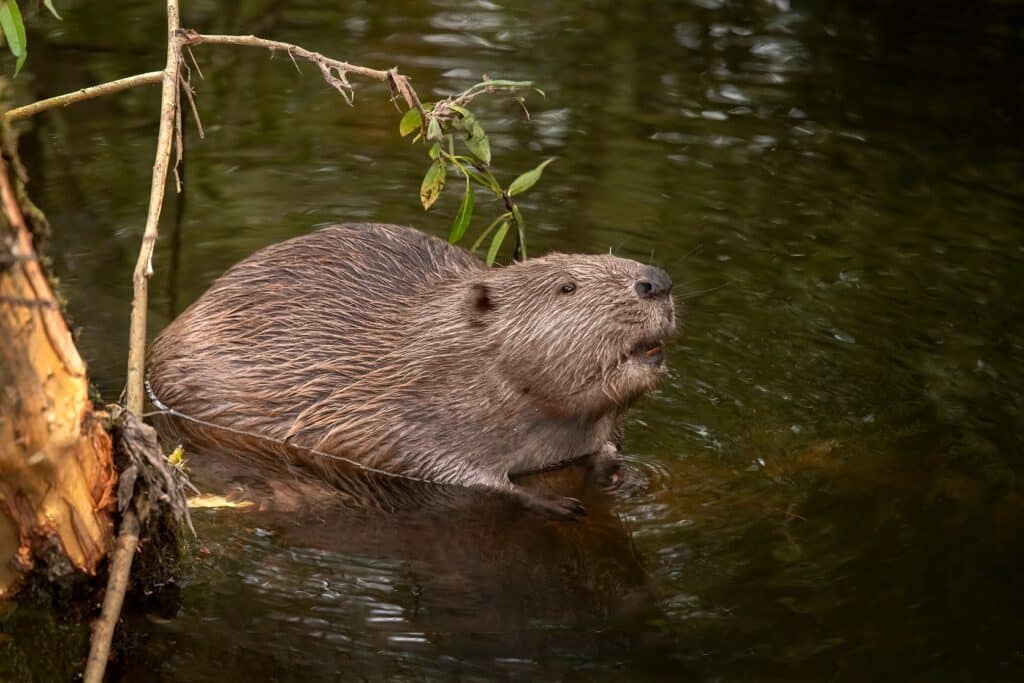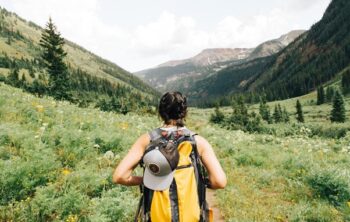What wildlife can you see in Cornwall?
From its cliffs and wild moors to its woods and river valleys, there aren’t many places in the UK that are better than Cornwall when it comes to natural beauty and wildlife. This little corner of the world is well-known for its array of marine wildlife, birds and mammals.
When you are on holiday at one of the caravan parks in Cornwall, no matter what time of the year you go, you should look to try and explore the county’s natural beauty spots and see if you can spot the wildlife in Cornwall. There are over 400 miles of stunning coastline you can look to explore and 57 nature reserves, so whether you’re here for a weekend or a week, there are plenty of wild adventures that can be had!
The Cornwall Wildlife Trust told us a bit about the types of mammals you can find in the wild in Cornwall and how people should act if they spot an animal in the wild.
“We have an exceptional array of mammals here in Cornwall, on land, in our rivers and at sea. From beavers that have been reintroduced after 400 years at the Cornwall Beaver Project to boxing hares in the early midst of spring and not forgetting our charismatic bottlenose dolphins – we’ve got it all!”
There are plenty of opportunities to enjoy Cornwall’s incredible wildlife, but it’s vital that our enjoyment doesn’t take precedent over the safety and wellbeing of the animals that we encounter. That’s why the Cornwall Wildlife Trust ask you to…
- Give nature space
- Leave only footprints during your visit
- Abide by the Countryside Code or the Cornwall Marine and Coastal Code when in, on or by the sea
Here we take you through some of the animals you can see in Cornwall.
- Birds
- Seals
- Beavers
- Dolphins
- Butterflies
- Marine life
- Deer
Birds

With its coastal environment and its location in the far southwest of the UK, Cornwall is an attractive area for rare migrant birds as well as more common bird species.
Cornish Birds of Prey told us a bit about the birds you can find in Cornwall: “The most common bird of prey is the Common Buzzard. There is also a good number of Red Kites, Kestrels and Barn Owls. If you are lucky, you may also see an Osprey.”
Paul from Cornwall Bird Watching Tours, who offer tours to anyone from novices to seasoned twitchers, told us about the most common types of birds that you can find in the Duchy: “Cornwall’s diverse habitats hold some amazing birdlife and there is always something to see throughout the year. From seabirds like Fulmars, Shearwaters and Gannets, Waders and wildfowl such as Curlews, Whimbrels, Dunlin, Wigeon and Teal on our estuaries and waterways to woodland species like Treecreepers, Woodpeckers and Nuthatches. Not forgetting our county bird, the Chough!”
In terms of the best places to see some of these birds, the Cornish Birds of Prey adds: “Walking along the coast path, moorland walks and walking the river camel, the River Fal and the River Fowey are all great for spotting Raptors. Obviously, if you popped along to visit us, you would get to see lots of birds of prey. They are all rescued from captivity either from other zoos, private collections or breeders.”
There is a whole host of impressive birdlife that you can see along Cornwall’s coastline too and some of the seabirds you can see include Puffins, Guillemots, Razorbills, Divers, Shearwaters and Skuas. They can be seen hidden on a cliff face, far out at sea or right up one of Cornwall’s beautifully vast and diverse river creeks, such as the Fal Estuary – the third deepest natural harbour in the world.
Seals

Image source: Dan Ransley
Grey Seals are a common sight around the Cornish coast and there are few sights more joyful than seeing these mammals playfully bobbing in sparkling coastal waters.
These amazing creatures are mesmerising to watch with their whiskered faces and doe-eyes making them a much-loved marine animal.
Dan Ransley, who is a Cornish photographer, told us: “Some of my favourite animals to photograph in Cornwall are the seals! It’s amazing to think that there are more African Elephants in the world than there are of these wonderful creatures, but we have over 40% of the world’s Grey Seal population in British waters and they can be seen around much of Cornwall’s coast.
“I often watch them from the coast path, swimming in the clear Cornish waters, but if you come across one hauled out onto land it’s very important to keep your distance and not cause any disturbance – energy used by a Seal keeping an eye on people or dogs when it should be resting means it will have to find more food to survive, and a frightened seal risks injuring itself while struggling to get back to the safety of the sea. However, watching quietly from a distance will reward you with hours of entertainment and opportunities for photos. My top tip for any wildlife photography is to concentrate on your subject’s eye – get this in focus and you’ve got yourself a top shot!”
Beavers

You may think that seeing Beavers in Cornwall and in the wild would be a dream, but now it is a realistic possibility. The once extinct Beaver is now making somewhat of a comeback in the county thanks to a project at Woodland Valley Farm to re-introduce them to the wild.
If you want to see these ecosystem engineers, then you can with the Cornwall Wildlife Trust. The trust told us how people can see these majestic animals.
“Join us on an organized guided walk around this unique reserve to see what the Beavers have been building, including the first beaver lodge in Cornwall in over 400 years! Visitors can see beaver dams in the daylight, then sit until dusk to try and glimpse these incredible animals as they emerge.”
Dolphins

You can see Dolphins off the coast of Cornwall throughout the year, but more often in the warmer months of the year.
The waters around Padstow and Port Isaac are particularly abundant with Dolphins and the best way to see them is on a boat trip. A pod of Dolphins is a common occurrence and if you get lucky you may get to see Dolphin’s bow-riding. This is where Dolphin’s surf in the wave created by boats and they often twist, turn and swim upside down as they glide through the water.
Padstow Sea Life Safaris, who offer tours along the North Cornwall coast, said they encounter all sorts of marine species, but one of the most common sightings are Dolphin’s.
“Common Dolphins are sighted regularly on our 2-hour tours where we have the time to search offshore and they more often than not come in to play alongside the boat. We often spot the shyer Harbour Porpoise, surfacing gently on calm days and also have occasional sightings of Bottlenose and Risso’s Dolphins that may pass by our coastline from time to time.”
If you are interested in seeing the marine wildlife that Cornwall has to offer, then Padstow Sea Life Safaris shares some of their top tips.
“Whales, Dolphins and Porpoises can often be spotted from the land with a pair of binoculars if you know what to look for; and sometimes they even travel close enough to the land to be seen with the naked eye! The Cornwall Wildlife Trust’s Seaquest Southwest Project hosts regular public sea watches, so if you’re not well practiced at spotting marine life, some experienced sea watchers will be on hand to help. If you want a closer view, then best to go out with a WiSe accredited wildlife watching tour operator who knows the best practise around wildlife to avoid disturbance. A general rule is to slow down, keep your distance and give the wildlife the opportunity to come to you on their terms should they wish; never forcing an interaction. Always be respectful of resting seals and nesting birds giving them enough space to remain relaxed and leave them the same way you found them.”
Butterflies

Image source: Ross Hoddinott Photography
With nature reserves such as Upton Towans or Penhale Dunes, Cornwall is also home to a plethora of rare and beautiful butterflies.
In the county, you can see the extremely rare Silver-Studded Blue Butterfly and Dark Green Fritillary Butterfly as well as the more common Peacock, Red Admiral, Comma and Small Tortoiseshell Butterflies.
If you are wanting to go out on a walk and spot butterflies, then the best conditions are considered to be sunshine and light winds.
Ross Hoddinott runs his own photography site and he told us: “Cornwall is home to an incredibly rich and diverse variety of wildlife. I tend to ignore the more obvious subjects and photograph Cornwall’s invertebrates and plant life instead. Cornwall’s dune systems are great places to find butterflies and wildflowers. One of my favourites is the Silver-Studded Blue – a small, scarce and beautiful little butterfly which you can find in good numbers near Perranporth and Gwithian. Although not an animal, I also love photographing the sea pinks that carpet so much of Cornwall’s clifftops during springtime.”
If you want to take some photographs of butterflies or any wildlife during your holiday in Cornwall, then Ross Hoddinott recommends you do a little bit of research.
“Ideally, get to know your subject first. Research and learn about its preferred habitat, behaviour, life-cycle and diet. Be patient and try to capture images that stand out – maybe through the use of an unconventional perspective, a creative technique, or by shooting in great light. The best time of day to take photographs is typically just after sunrise and just before sunset when the light is soft and golden.”
Marine life
Whales have become more frequent visitors to Cornish waters in recent years, but at the beginning of May, it was confirmed that there are Orcas in Cornwall after the pair were seen in the waters surrounding the Minack Theatre.
There have been many reports of Orcas in Cornwall, but previous sightings have not been able to be confirmed, but as there were photographs taken these were validated.
As well as Orca Whales there are lots of other whales which can be seen in the waters surrounding the Cornish coast.
AK Wildlife Cruises, an award-winning wildlife and sightseeing tour operator, told us a bit more about the whales and other marine life you can see in Cornwall.
“Cornwall boasts an extraordinary diversity of outstanding and unique marine wildlife which can be seen all year round. Up to 8 different species of cetaceans can be found in the rich waters surrounding Cornwall’s spectacular rugged coastline, with Humpback Whales returning every year in increasing numbers.
“Sightings to look out for along the coast include Basking Sharks – the world’s second-largest fish – as well as Cornwall’s resident pod of Bottlenose Dolphins. Oceanic Sunfish, the heaviest bony fish in the world can be seen floating on the sea’s surface waving their dorsal fin, as well as the occasional Leatherback Turtle, both of which visit our waters to feed on the high number of Jellyfish which swarm our coast in the warmer months. Grey Seals can be seen anywhere along the coastline ‘bottling’ and playing in the surf or hauled out on beaches.”
Padstow Sea Life Safaris adds: “In recent years, we have also had an increasing number of sightings of Minke Whales, a small baleen whale that can grow up to 10 metres long and feed on the shoaling fish in our waters like Mackerel and Herring. We have even been lucky enough to spot larger whales too including a couple of sightings of the Sei Whale and a juvenile Fin Whale.”
Deer

Cornwall is home to a variety of deer species and you are highly likely to see these quiet mammals during an early morning walk or evening stroll in the countryside.
A common type of deer that is found across Cornwall is the Fallow Deer, which has eye-catching white spots in its fur. Although it was introduced by the Normans, the Fallow Deer have been here so long that it is considered naturalised.
The attractive Roe Deer is also native to the UK and is widespread across woodland, farmland, grassland and heathland habitats in Cornwall.
If you are lucky you may also see Red Deer, which are the UK’s largest deer. Despite being synonymous with Scotland, they do live in the South West of England. You are most likely to see them on grasslands near woodland and moorlands.
These are just some of the animals that you can see in the county and there are plenty more that are not on this list. So if you want to see some of these animals, then you should book a holiday at our Looe caravan park.
To read more articles like this, then take a look at the latest news section of our website.







